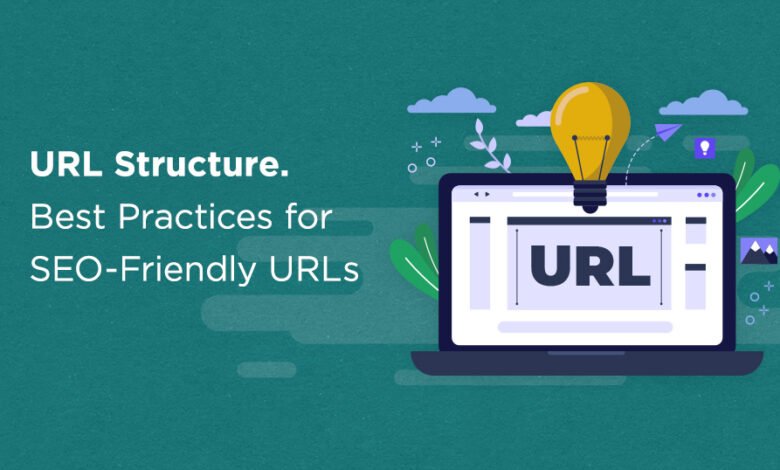Why URL Structure Still Matters for SEO

Key Takeaways:
- URL structure impacts SEO by enhancing user experience and helping search engines understand page content.
- Well-structured URLs improve click-through rates and ensure better indexing by search engines.
- Effective URL structure should be simple, descriptive, and consistent across the website.
Table of Contents:
- Introduction
- The Importance of URL Structure
- Components of a Good URL Structure
- Impact on User Experience
- Enhancing SEO with URL Structure
- Best Practices for URL Structure
- Conclusion
Introduction
The structure of a URL is often overlooked in the grand scheme of SEO. Yet, it is a foundational element that holds considerable power in shaping the effectiveness of search engine optimization strategies. A thoughtfully constructed URL aids in the discovery of a webpage by providing both users and search engines with a glimpse into its content. As search algorithms evolve, maintaining a URL structure that aligns with modern SEO practices remains not only relevant but increasingly essential for maximizing online visibility and user engagement.
The Importance of URL Structure
URL structure plays a crucial role in guiding both users and search engines to the relevant resources they seek. By leveraging a well-organized URL architecture, websites can enhance user experience, streamline navigation, and improve search visibility. The organization of a URL serves as a signal to search engines about the relevance and hierarchy of the content on the website. When crafted meticulously, a beneficial SEO URL structure augments the indexing process, leading to better search rankings and greater accessibility for users.
Components of a Good URL Structure
A good URL structure is succinct, clear, and informative. It includes descriptive keywords that illustrate the content’s nature without being overly lengthy. Descriptive keywords aid user understanding and provide search engines with pertinent information about the webpage. It’s also crucial to use hyphens to separate words for enhanced readability, as underscores and special characters can complicate both user understanding and search engine processing.
Consistency across URLs is another critical component. A coherent pattern in URLs across the website fosters a professional appearance and facilitates the search engine crawling process. Furthermore, avoiding the use of dynamic URLs with long strings of numbers and parameters helps maintain simplicity and clarity. Instead, opting for static, keyword-focused URLs reflects a commitment to quality SEO and enhanced user experience.
Impact on User Experience
The structure of a URL directly influences user experience. A well-structured URL is easy to comprehend and gives users an immediate understanding of what to expect upon clicking the link. This inherent clarity encourages users to interact more with the site, leading to increased engagement and improved satisfaction rates.
Intuitive and relevant URLs bolster the user experience by providing an easy means of navigation and page sharing. Users are more likely to trust and return to websites where the URLs offer a clear, consistent path to the content they need. This trust fosters loyalty and can lead to higher retention rates.
Enhancing SEO with URL Structure
SEO is fundamentally driven by how efficiently search engines can analyze and rank content, and URL structure is an integral component. Search engines utilize URLs to understand the context of the webpage, evaluate its relevance, and determine its position within the larger website hierarchy.
Having descriptive keywords within URLs can improve a page’s ranking by signaling to search engines what topics are covered on a page. This is vital for indexing, as search engines depend on these cues to appropriately categorize and rank a webpage. Moreover, well-structured URLs contribute to higher click-through rates from search engine results pages. Users who see a clean, informative URL are often more inclined to click the link, leading to increased traffic and engagement.
Best Practices for URL Structure
Adhering to certain best practices is essential to unlocking the full potential of URL structure for SEO. First and foremost, aim for simplicity and brevity in URLs. A short URL is easier to read, type, and share. Including only the most relevant keywords ensures clarity and efficiency.
Incorporating hyphens as word separators and avoiding special characters keeps URLs clean and user-friendly. It also optimizes URLs for search engine parsing, improving indexing and ranking processes. Consistency in URL patterns across the website presents a unified, professional image, while logical organization reflects a coherent content structure.
Finally, regularly auditing and updating URL structures ensures they remain relevant and practical. The digital landscape is ever-evolving, so continually refining URL strategies to align with current SEO standards is crucial for maintaining competitiveness and visibility online.
Conclusion
The significance of URL structure in SEO cannot be understated. As search engines advance and user expectations evolve, a well-constructed URL becomes even more critical in ensuring visibility, enhancing user experience, and driving organic traffic. By focusing on maintaining a simple, descriptive, and consistent URL structure across your website, you set the stage for ongoing search engine success and user satisfaction. Constant vigilance and adaptation of your URL strategy are the keys to unlocking long-term digital prosperity.


